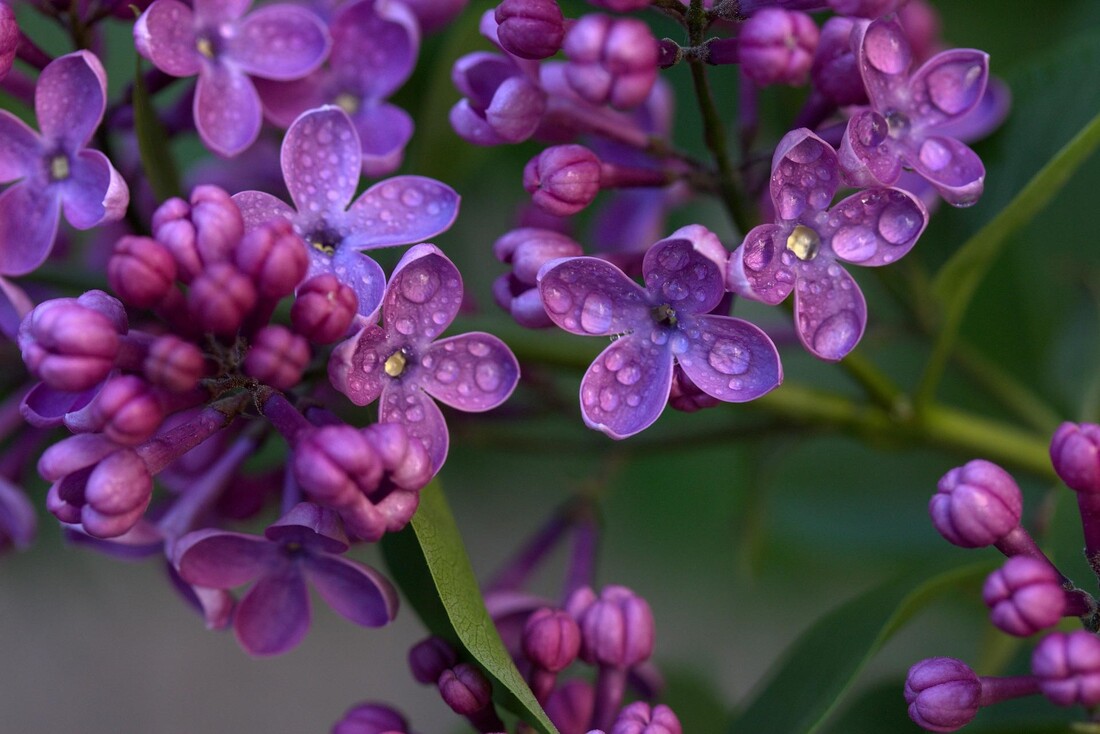|
|
by Cathy Bylinowski, Horticulture Instructor, University of Missouri Extension- Jackson County Maintaining a yard and garden can take a lot of time, energy, and money. There are many rewards for all that effort; one is the wonderful fragrance of Common Lilacs. If you have been thinking of getting a lilac for your yard, May is a good time to plant one. There are many species and hybrids of lilacs. They all need:
Old Fashioned or Common Lilacs- Syringa vulgaris Common Lilacs bloom from mid to late April through mid- May. They grow to 15 feet tall. The fragrance is special- a mixture of sweetness and intense perfume. In my mind there is no other flower fragrance else like it. Smelling a cluster of lilac flowers is a yearly, spring treat! Pruning a portion of the old wood on Common Lilacs helps prevent borers, powdery mildew, and increases longevity. More Lilacs French hybrids Lilacs- These are dense, upright-growing shrubs. The flower color of these lilacs ranges from white to pink to lavender to blue and purple. Both single and double flowered forms are available. The flowers of most varieties are very fragrant. They grow up to 15 feet tall and 3-4 ft. wide Korean Lilac- Syringa pubescens subsp. patula, also known as Korean Lilac “Miss Kim”. They grow 4ft to 9ft. tall and 5 to 7ft. wide. Dwarf Korean Lilac- Syringa meyeri, grow up to 5-8ft tall, 5-7 ft wide. Both of Korean lilacs have a sweet scent. They will bloom 1-2 years after planting. Japanese Tree Lilac, Syringa reticulata, is a medium to small tree. They grow up to 25 feet tall. Japanese Tree Lilacs have a rounded form and spreading growth. Large clusters of fragrant white flowers appear about mid-June, or about 4 to 6 weeks later than Common Lilac. The odor is different than Common Lilac. It is sweet, similar to privet flowers. The bark is reddish brown and attractive in winter. It is considered one of the hardiest lilacs. Planting- Plant lilacs no deeper than they were planted in the pot you bought it in. Lilacs benefit from light mulching, especially as they are getting established. Remember no mulch volcanoes! Keep mulch off the trunk of the plant. Pruning- Proper pruning is necessary to keep the plants attractive and to promote heavy flower production. After the plant becomes established, about one-third of the old stems should be removed each year. Older lilac stems may be attacked by borers. Proper pruning helps to minimize this problem. Some Lilac Diseases and Pests Powdery mildew looks like whitish powder on the leaf. It is caused by a fungal infection. It is can be a problem on some lilacs. Be sure to prune lilacs to increase air circulation. While powdery mildew can be unsightly, it will rarely kill the plant. Fungicides can be used to prevent powdery mildew. Be sure to read the label before use. Lilac borers can be a problem. Integrated Pest Management (IPM) is the recommended strategy for controlling this and other pests. IPM starts with simple pest control methods before using any chemical insecticides. For more information, review this link to the Missouri Botanical Garden- https://bit.ly/3vVFZzO Need more information on lilacs or other ornamental plants? Feel free to contact me or the Master Gardeners of Greater Kansas City Hotline- 816-833-TREE (8733) [email protected]. Lilac flower close-up. Used with permission of Pixabay. Photo by Adina Voicu.
Comments are closed.
|
Categories
All
Archives
July 2024
|
Grain Valley NewsGrain Valley News is a free community news source published weekly online. |
Contact Us |



 RSS Feed
RSS Feed
